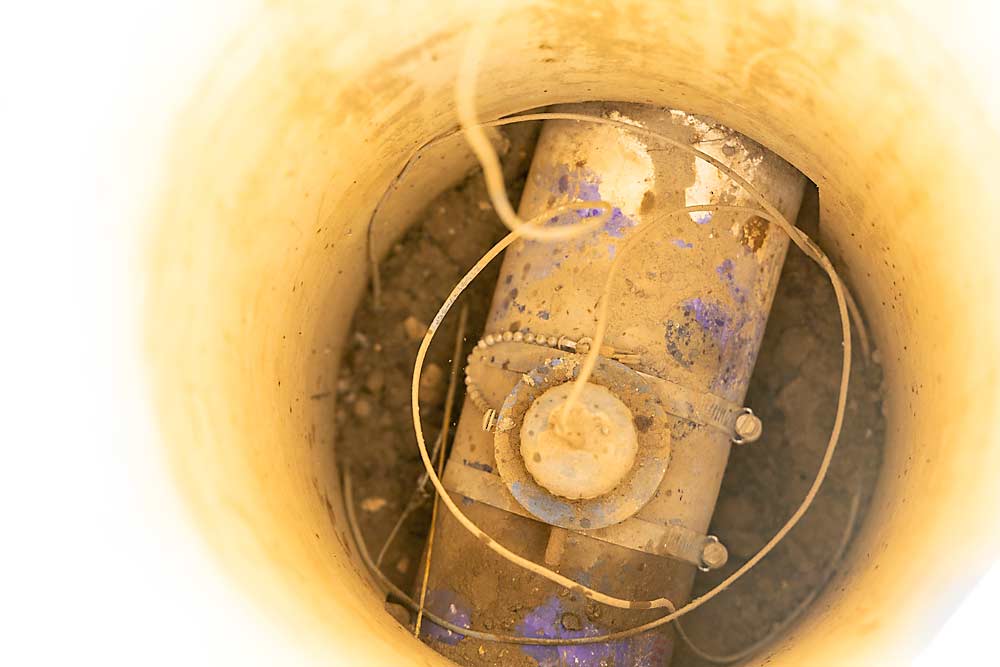
Deploying soil moisture sensors, irrigation flow meters and regular canopy imagery enabled one Yakima Valley winery to cut water use by a third across 300 acres.
“Just the relatively rudimentary technologies we’ve deployed so far have reduced our water needs 30 to 35 percent,” said Patrick Rawn, the vineyard operations manager at Two Mountain Winery in Zillah, Washington. “All of this is in service of growing grapes as efficiently as possible.”
At Two Mountain, one of the first vineyards in the state to pursue certification under the new Sustainable WA program, they aim both to conserve a scarce resource and optimize grape quality.
But there’s also a cost benefit, Rawn said, to not delivering more water than necessary.
In fact, he started down the path of precision irrigation technology after acquiring a neighboring vineyard served by a well, rather than the irrigation district that delivers to the rest of his acreage. The infrastructure needed an upgrade, so he opted for technology to make operating the well pump as efficient as possible.
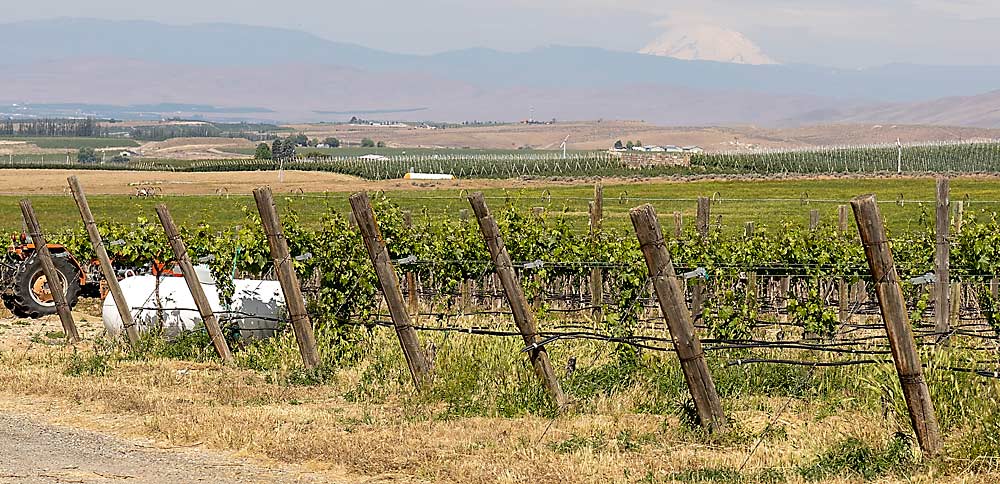
That started with a variable-frequency drive system, which controls the pump speed to be more efficient, and flow meters with real-time readings in every block. Now he has records of exactly how much water the vines received.
That’s the water delivery side. On the water need side, Rawn deployed about 30 soil moisture sensors across his 300 acres. All the soil and flow sensors transmit via a LoRaWAN network designed by a contractor who specializes in low-power, low-cost networks, Thingy IOT.
“The barrier of entry (to sensors) is the cost to get the data out,” Rawn said. Instead of choosing a sensor first and trying to connect it, he worked with Thingy co-founder Scott Waller to “think end to end” and first design a communication network for his vineyards. “You have to structure your sensors around the communication network you have.”
With the network in place, he’s ready to deploy additional technology in the future, such as sap flow sensors or automation.
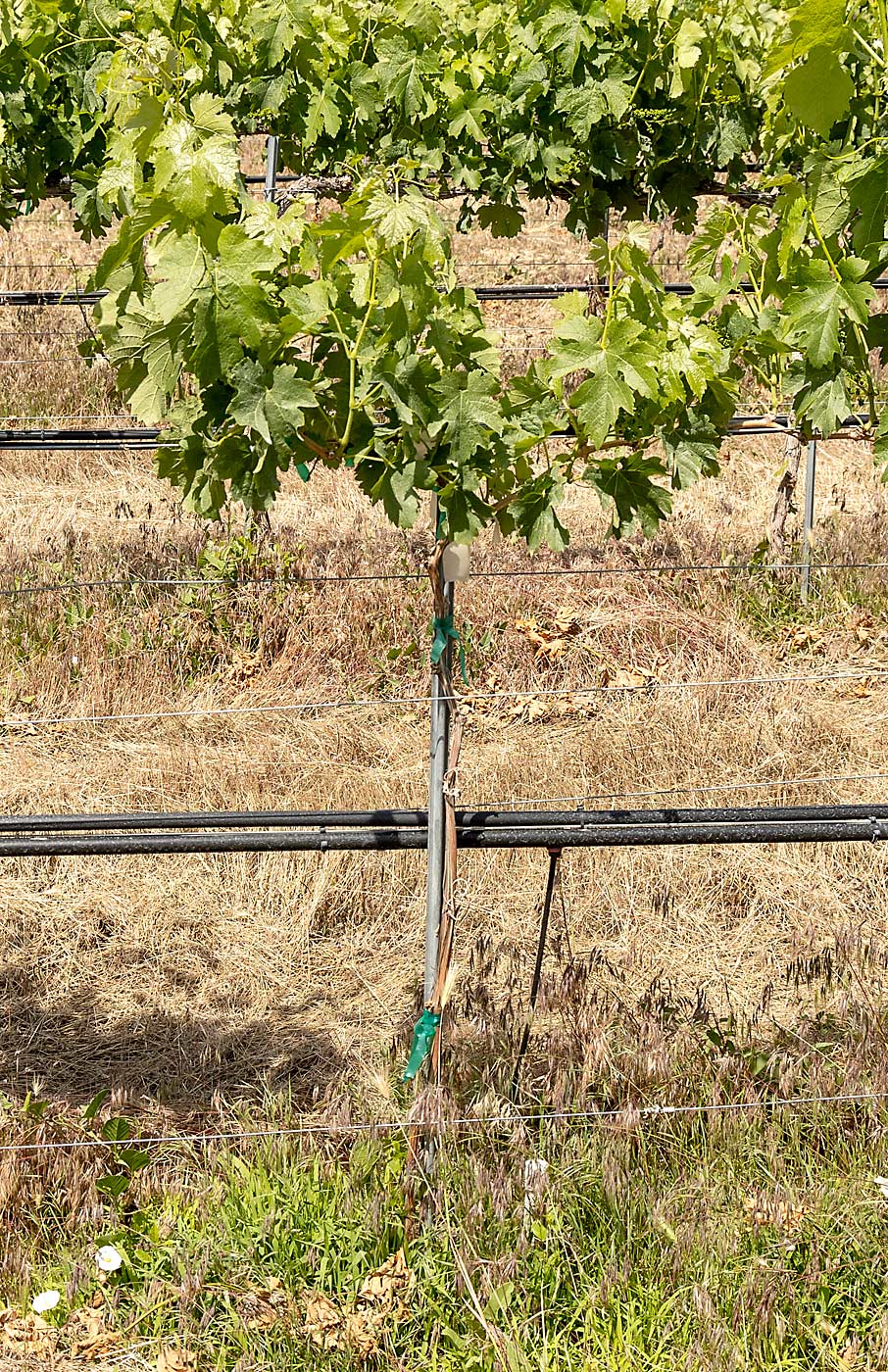
Efficient irrigation
This spring, Two Mountain and neighboring Dineen Vineyards (also managed by Rawn) hosted their winemakers and other industry members for a “sustainability showcase” to share how the pursuit of environmental, social and economic sustainability has changed farming practices.
Rawn spoke about his irrigation investments, from sensors to regular aerial imaging, and how they have helped to conserve water while still ensuring great grapes. He invited Jamie Baker, his Ceres Imaging sales rep, to talk a bit about how the company’s technology can bridge the gap between point-specific data from sensors and the spatial variability of the vineyard. The Ceres cameras capture six different layers of images, including NDVI, thermal imaging and chlorophyll sensors, Baker said. The chlorophyll sensor can detect signs of water stress before the NDVI, for example.
The company’s plant stress index helps him “start to see around the corner,” at how deficit irrigations are working, Rawn said. He schedules eight to 10 flights from bloom until veraison, during the period he is using deficits to control canopy growth. Then, he’ll run a few more flights at the end of the season to ensure the vines aren’t stressed heading into winter.
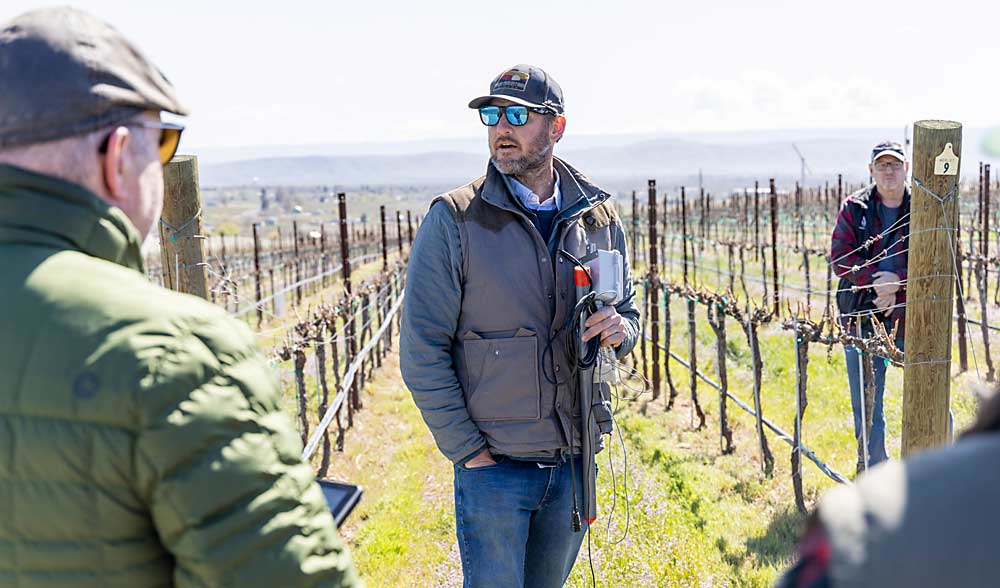
Rawn also uses the evapotranspiration modeling from WSU to predict water needs, but he said he’s “excited to play with the OpenET model from NASA.” This new approach uses satellites to estimate water consumption at a field scale, according to a news release from NASA. Growers can access it for free at: openetdata.org. Taken all together, Rawn has a lot more data on both his vines’ water needs and the vineyards’ water use, which he can use to optimize his irrigation to meet his management goals.
“The challenge is that right now, all this data is siloed off,” Rawn said. “There’s not one company doing everything you need.”
In fact, he would be hesitant to hand over the reins to any tech company promising to simplify irrigation for him — startups go under, after all. Instead, he plans to have a custom database built to combine his different data sources into one place.
That will be the foundational piece to eventually move forward with automation to free up the human resources currently spent on irrigation, he said. The technology is arriving (see “Drip on demand”) but Rawn wants to wait to see how costs come down and how it will help him further his water efficiency.
“Are we as efficient as possible? No,” Rawn said. “We’re on the precipice of this technology.” •
—by Kate Prengaman

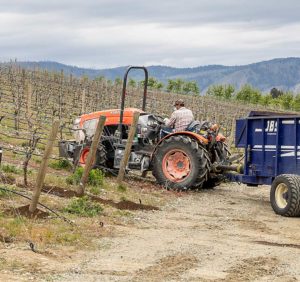
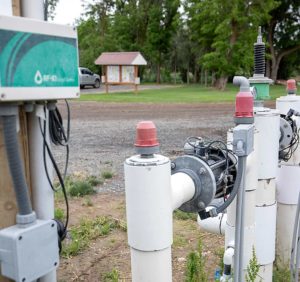





Leave A Comment